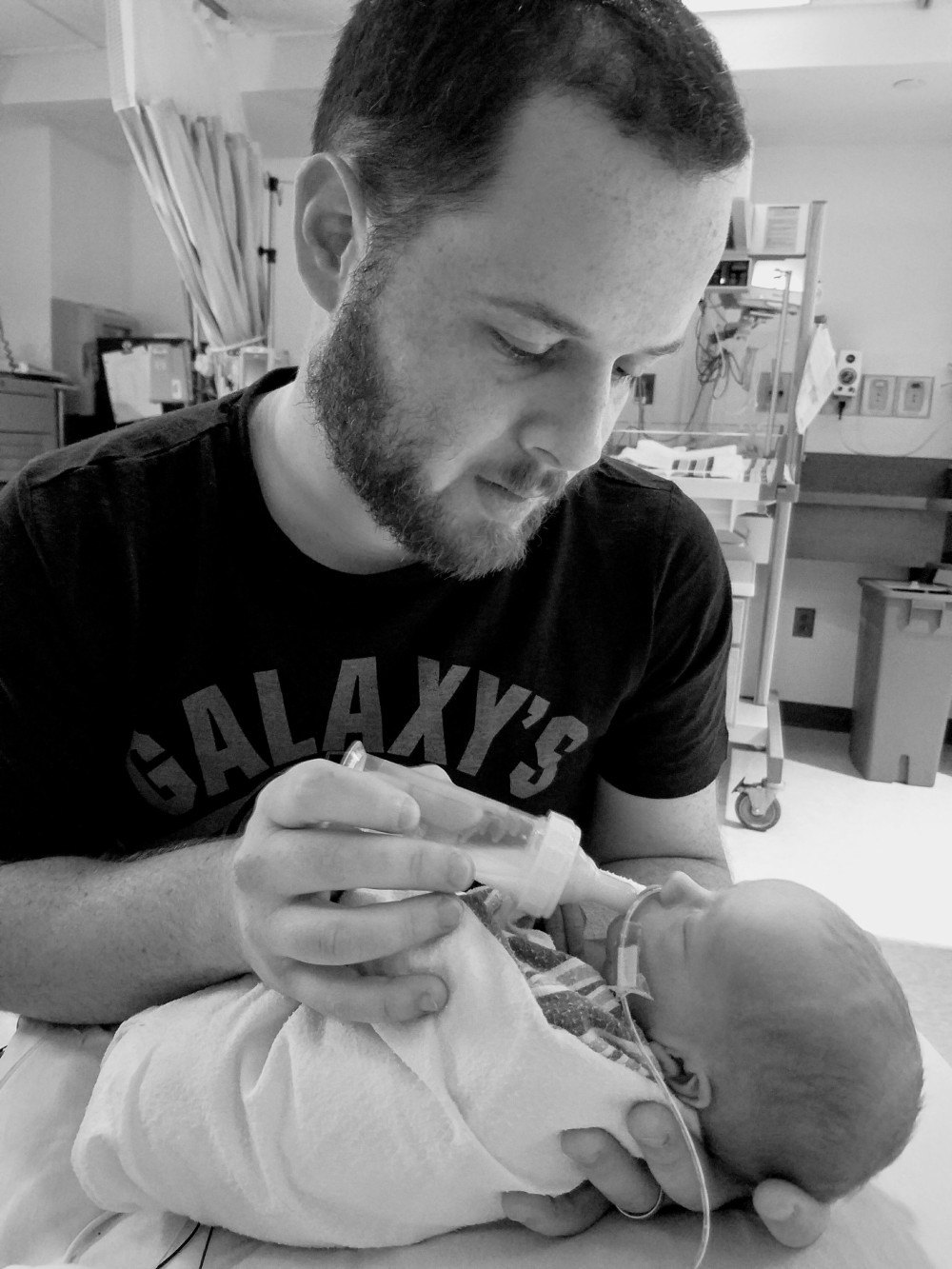For years, as husband and wife with no kids, we simply budgeted for Christmas. A small portion for each person on our list, and slightly more for each other.
We greatly enjoyed our quiet Christmas mornings alone, before heading off to spend time with both of our families. We made the small number of gifts stretch by wrapping all our stocking stuffers and opening them one at a time. Even if they were just the required ornament (sometimes handmade), candy, and lip balm.
And somehow, no matter the budget, we always seemed to get about the same number of gifts for each other. Last year it was exactly the same – three – and they even fit in similar “categories:” a book, something to keep us warm, etc.

Before too long, our family became three. And, although just four months at his first Christmas, we had to decide what we would do for our son’s Christmas gift traditions. It did not seem logical to spend the same amount of money on him as we did on each other. We could get him a box of tissues and he would be elated! At the same time, we did not want to overwhelm him with a vast number of gifts. I don’t care if he gets more gifts than us, but opening presents for hours is incredibly overwhelming for a child, and years from now, could make him spoiled with entitlement.
In my considering these things, we came across the four gift rule for Christmas presents. You may have heard of it as a way to get unique, useful gifts for your children without going overboard. It doesn’t focus so much on money, as it does on the number of gifts. Certainly, you don’t need to spend the same amount on your toddler as you do for your teenager.
The idea is that each child gets four gifts only, one from each category:
- Something they want.
- Something they need.
- Something to wear.
- Something to read.
(You can think of it like the “Something old, something new,” many brides still recite as a fun tradition.)
In pondering this framework in our own family, two ideas struck us. First, we wouldn’t want to wait until Christmas to get our son something he needed. Certainly, many examples would be either small (i.e. socks), such that he wound hardly call it a “gift,” or be very big (i.e. a laptop), which would be so exciting they hardly even feel like a boring old “need,” so much as a great big “want!” Thus, if there was one thing I wouldn’t mind dropping from this list, it would be the “need” item.
Second, if we do drop one item, that would leave just three gifts on the list: what could be better!? We already happen to get each other three things for Christmas, so it seemed like a very reasonable number of gifts. Plus, the fewer gifts, the nicer all of them (or at least one of them) could be.
So we made our own three gift rule for Christmas Presents:
- Something they want.
- Something to wear.
- Something to read.
Last year, although he was completely unaware of the ceremony of it all, it was fun practice to get him three gifts. Since he was just an infant, he was fully stocked on things to wear, so we gave extra books instead. We got Theodore bath toys (want), and three small board books (read). In his stocking, he got baby paper, teething toys, and an ornament.
This year, we have not quite nailed down his list, but this is a good sampling of what could be:
- Something they want: a toddler-size table and chairs
- Something to wear: slippers
- Something to read: My First 100 Words Lift-the-Flap

In his stocking, Theodore will probably get getting a few of his favorite things, such as: play-doh, crayons, bubbles, animal figurines, play food, and an ornament. (If you are looking for shopping ideas, check out the Dollar Tree, which is probably where I will get all of these things.)
By keeping ourselves under control in the number of gifts we can give him, it forces us, naturally, to be more thoughtful in the type of gifts we give him. So, instead of just adding in “one more” small toy (“But it was on SALE!”), I am forced to consider carefully which toys will go the longest, in terms of his interest, and thus be the most useful. Open-ended and high-quality toys will, by default, be the picks most often.
Plus, Theo is less likely to be overwhelmed on Christmas, and every other day of the year! Research shows kids do a lot better with fewer toys around. It allows them to be more creative and actually play more. Not only do I have less toys to clean up and store, but Theodore will get more use out of the toys he has. A win-win!
With Christmas coming up at lighting-fast pace (it gets faster every year, doesn’t it?), consider whether your family should adopt a “number” rule when it comes to toys and gifts. This applies not only to parents (who have just as difficult a time not spoiling their kids as anyone), but grandparents and aunts and uncles, too! And these principals can also easily be followed at birthdays and in Easter baskets, as well. When we have the choice, we will choose quality over quantity, every time.
How do you decide how much or how many gifts to get your child at Christmas? What about your spouse or significant other?
-D. E. Barbi Bee





